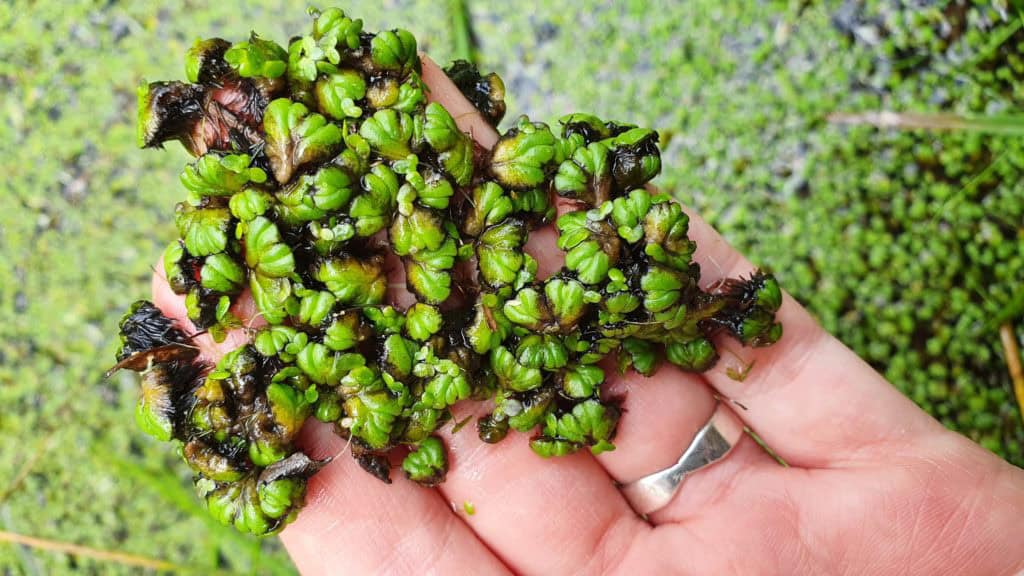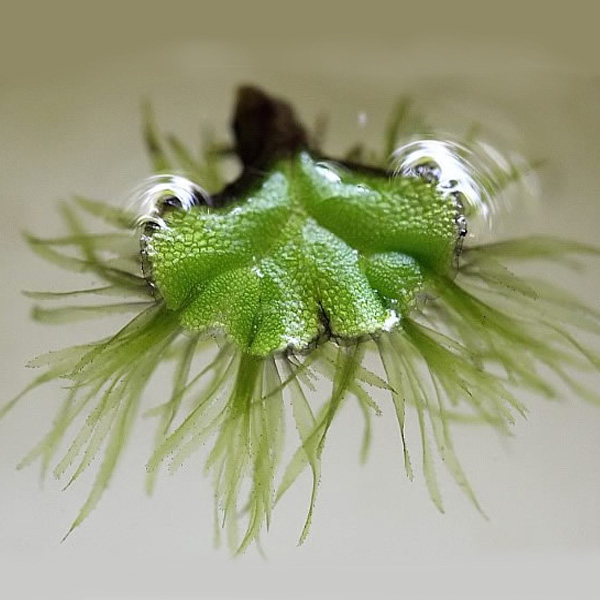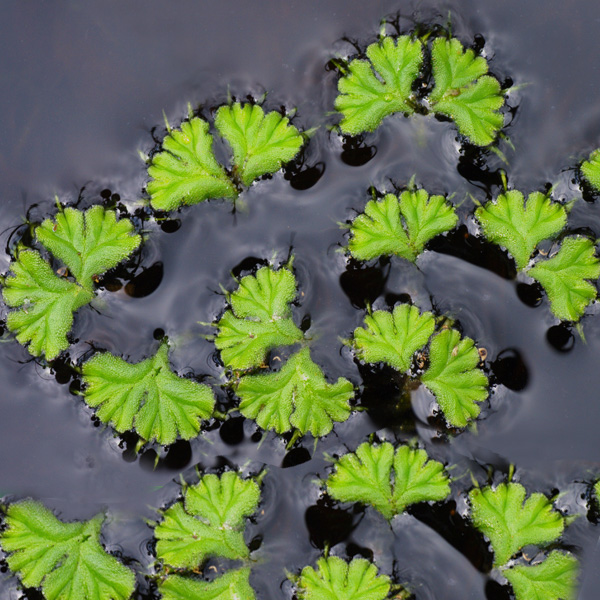Liverwort
weed identification
Depending on the conditions under which the plant grows, R. natans has two very different forms. The same species is able to exist on land or in aquatic environments. The terrestrial form develops into rosettes 25–35mm across, of short and narrow branches having almost parallel sides. The aquatic form (and the more common form) develops as broader, heart-shaped thallus with fewer branching’s and long slender purple scales hanging from the underside. The two forms are so physically different from each other that they were originally thought to be different species.
Stationary and slow-moving water bodies e.g. ornamental ponds, fish ponds, dams, wetlands.
It reproduces vegetatively (plant fragments) or by spores (rarely).
It can be dispersed by attaching to animals such as water birds, turtles or livestock, human activity, floods or wind dispersal (spores).
Provide nesting habitat for small freshwater fish.
What does Liverwort look like?
Disadvantages of Liverwort
Rarely does Liverwort cause problems for a water body. If full coverage of a pond or dam were to occur, you could expect the following problems:
- Limit oxygen diffusion
- Shading out of submerged vegetation that could result in death
- May cause fish and other aquatic life death
- May change the water chemistry to favour harmful algae and bacteria
treatment
Orange Oil – Designed to treat free floating organic matter. This treatment is best applied when 20% of the surface water is still visible, and is intended to be used over multiple treatments (day 1, 2 and 4).
AQ200 Aquatic Herbicide + Wetting Agent – Chemical Herbicide designed to kill free floating weeds quickly. Use on mild to severe infestations.
Aquatic Weed Skimmers – Physically remove free floating weeds. Use on mild infestations or to aid herbicide treatments.
Aquatic Harvesting – Large amphibious machine that clears the surface of floating aquatic weeds. Book this service for severe infestations or for larger water bodies.
prevention options
Surface Clear – Creates a protection barrier on the surface of the water to limit plant replication and new infestations forming. Use on its own or after herbicide treatments.
Aerating Fountains – Reduces the severity and likelihood of aquatic weed infestations. Use in any body of water.







